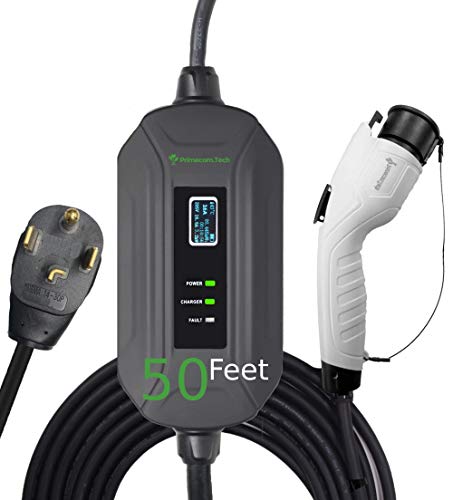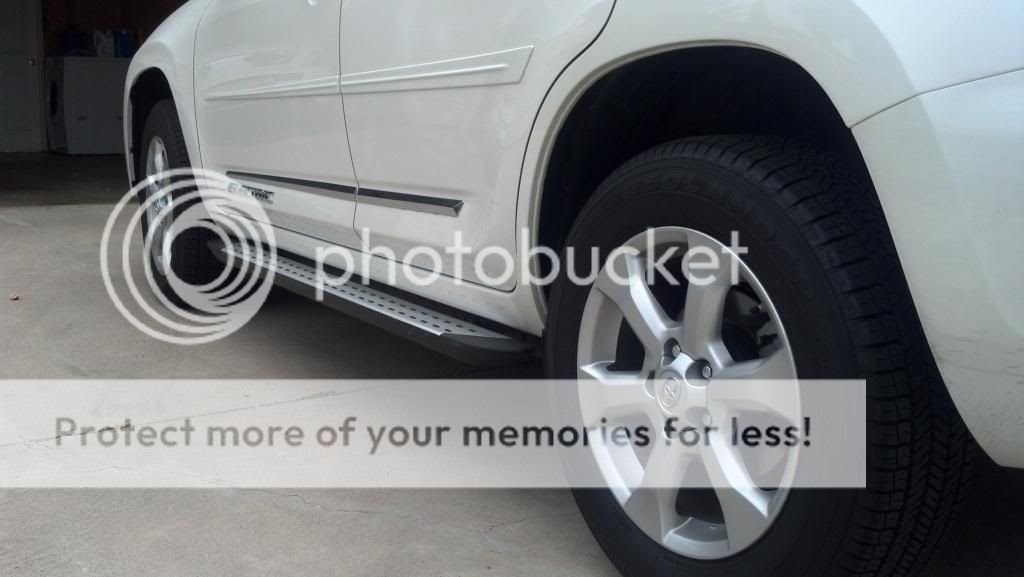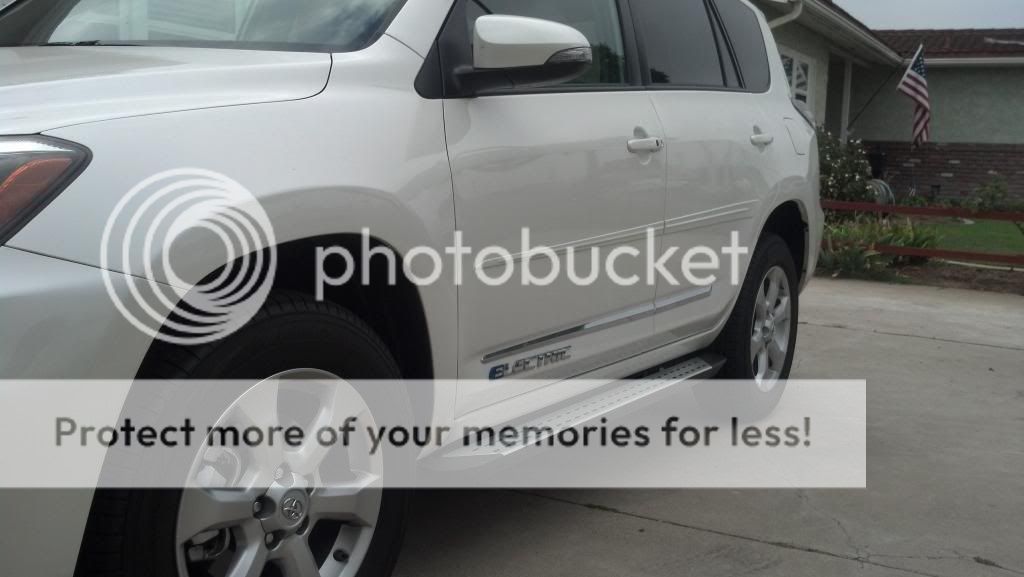I'm going to post this information in the hopes that it helps others who are trying to make decisions about running boards.
Ok, so if you look at the instructions, it's a little difficult to understand what they want you to do without looking at the bottom of your car. Even then I found it difficult and had to look at a friend's 2010 RAV4 to see what it looks like without the massive battery and aluminum extrusions.
The Westin running board mount is designed to have 3 brackets: front, middle (which is actually closer to the back) and back. There are 2 large oval rubber stoppers under the car, one towards the front and one towards the back (so front one is behind the front wheel well and the back one is in front of the rear wheel well). The brackets are designed so that the front and middle bracket are held in place by a bolt that gets positioned by using a long metal rod that is welded to the bolt. This is so that you can put it up through the oval hole, and use the thin metal rod to position the bolt to come out through another hole that is covered on our car by the aluminum extrusion that is protecting/holding the battery and on the normal RAV4 by some tape and undercoating. The holes that these bolts are supposed to come out of are not visible at all for us. The front and middle brackets also have these metal plates that are used to clamp down to the pinch welds. I looked at where these were supposed to be mounted and in order to use the existing brackets as designed, it would involve a lot of cutting of the extruded aluminum battery mounts and there was no way I was going to do that.
The rear bracket is different. It is only supported by a bolt that is welded onto a short narrow metal plate that fits into the oval hole. I tried to put the rear mount on and I found that it would only work if I put that last bolt in backwards with the short narrow metal plate facing backwards and putting the passenger side rear bracket on the driver's side. I then took the other bolt with the short narrow metal plate and put it in the front oval hole and bolted the driver's side rear bracket to this bolt. I also needed to temporarily remove some aerodynamic plastic shielding (a slit will need to be cut into this for permanent mounting of the front bracket). Doing it this way, I know the brackets are at the correct height that they are supposed to be. I tightened the brackets down and then dry fit the running board. Since the original design used 3 brackets and this method would only have 2, I think there is the potential for the running boards to sag if a really heavy person were to stand in the middle (not sure what the max rated load is, but I'm sure it was rated with 3 brackets). Since I'm putting the running boards on to help my 6 and 3 year olds get into the car, I'm not worried about the weight. The running boards feel solid and I'm sure they would support my weight (200 lbs) in the middle, but I wouldn't be jumping up and down.
Basically if you look at the installation instructions for the brackets, I figured out that I could put both of these on if I had 2 more of part #11 and 1 more each of parts #6 and #7.
There is another member, dark, that posted pictures of his RAV4 EV with beautiful 20" wheels. He bought some other brand of running boards and he also said that he had to modify his brackets to make them work. I asked him to send me pictures. For his running boards, he used his brackets (not Westin) and had to cut the back part of the metal brackets off, and put bolts through the round holes that are currently in the bottom of the rocker panels that have small round rubber plugs in them. I think that brand of mounts either chose that position to mount the running boards or he adapted the brackets to use those holes. The one thing that I noticed was that the height of the running boards was relatively high, with the top of the running boards being just below the bottom edges of the doors. The position of the Westin running boards is much lower, with the top of the running board is about even with the bottom of the rocker panel.
Since I didn't have the extra parts, I took it all off when I was done with the dry fitting and I put everything back in the box. I'm waiting for them to send me the extra parts before I permanently mount this, since I would only be able to put one side on. I think it will take me only 15 minutes per side to put the brackets on. It'll probably take another 15 minutes to put the notches in the aerodynamic shielding, and just a few minutes to put the running boards on top of the brackets and tighten them down. I didn't need to jack up the car at all (but this process did make me realize that we don't even have a jack with the car) and I just put down a carpet remnant so I could lay on my back while looking for the holes and fitting the brackets.
In terms of the look between the brushed aluminum and black I decided to go with the black for 2 reasons. First of all, the running boards on my land rover were all black and I liked that look. Secondly, the black running boards were cheaper. I ordered both of these on Amazon and they were shipped to me for free.
I'm currently away on travel and I hope that the additional parts are there next week when I return. I will complete the installation as soon as the parts arrive and I will try to take some pictures as I go.
I wanted to also comment on a few things about the effects of adding running boards, and or roof racks. Adding additional components that will be in the airstream will certainly add drag, no matter how well or aerodynamic they are. If there is any frontal surface area, then there will be drag. However, drag shouldn't be the only concern. I watched several of the videos that Toyota posted with the designers/engineers that worked on this car and they explicitly stated that they removed the roof racks and other items because they wanted to save WEIGHT. As it is, I think the car still weighs about 400 lbs more than the equivalent RAV4. This extra weight is something that the power train has to move around all the time, where as the drag only starts to be a major consideration as the speed increases. With all that being said, I added mud flaps, will be adding running boards, a hitch, and probably the roof racks. Even if this decreases my range by 10% (which I hardly doubt it would do since most of my driving will be less than 45 MPH), I would be ok with this since my situation doesn't require me to have long range. That's just my $.02.


























